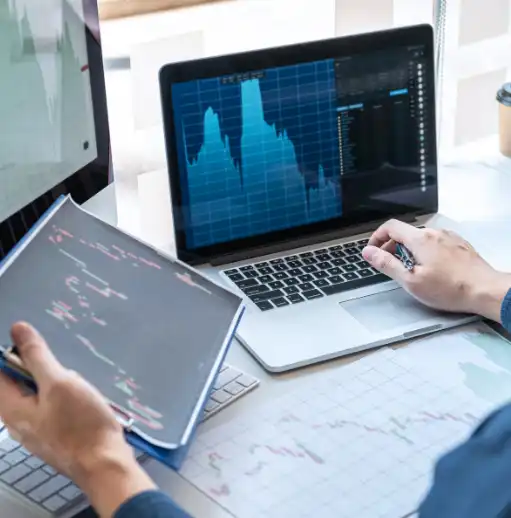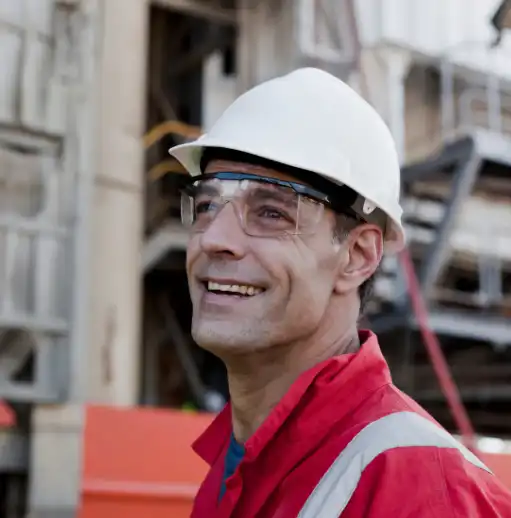
Key takeaways
- Technology now shapes both efficiency and experience. From AI-driven maintenance to IoT-enabled smart buildings, modern facility management tools improve operations while enhancing comfort, safety, and flexibility for hybrid workforces.
- Data is the foundation of future-ready facilities. Real-time occupancy, asset performance, and energy usage insights allow facility managers to optimize resources, reduce costs, and make strategic, evidence-based decisions.
- Sustainability and adaptability are top priorities. ESG-focused solutions, scalable software, and immersive technologies like AR/VR help organizations meet environmental goals and evolve with changing workplace demands.
Organizations need return-to-office initiatives with levels of comfort and connection remote work can’t deliver. So, facility management professionals must focus on not only controlling costs for operations and maintenance but also creating a better overall work environment. Their long-term success depends on how effectively they leverage new facility management technology trends.
But which ones? Over the last few years, many new types of facility management software solutions have emerged, including more advanced facility management software and mobile applications. Some of the new tech caters only to short-lived fads, while others will become the foundation of future success.
Here are the facility management technology trends with the greatest long-term impact.
Strategic space planning tools
Originally, space management primarily revolved around maximizing occupancy, minimizing costs. While those are still important concerns, many have changed their priorities to focus on improving overall space utilization and space quality to create the best possible experience for employees using the hybrid model.
When employees are in the office, they don’t necessarily want to always sit at the same desk every time. Some days it makes more sense to have a spot apart, so they have the uninterrupted silence they need to focus on their work. Other days, they need spaces that allow sustained collaboration, support deeper connections.
Facility and office managers need the ability to reconfigure existing spaces or make other spaces reservable instead of assigned to specific employees.
Equally important is the need for space planning solutions that can help you forecast future needs, manage leases, and properly allocate resources and charge them back to different tenants or departments.
Visitor management technology
Expect to see everyone from office managers to building owners implementing more workplaces adopting sensor-enabled solutions including:
- Smart lighting that turns itself off in empty spaces
- HVAC systems that adjust based on occupancy
- Visitor management systems that allow guests to pre-register
Employees benefit from being able to get in and out of the workplace faster, more smoothly. No one wants to waste time waiting in a crowded lobby. Facility managers benefit from having reliable records of who was in the facility and when, critical data when it comes to planning for everything from how many desks to have to lease renewals. And everyone benefits from improved safety and security.
Sometimes, there are people you want to keep out of the office. And then there are times, including drills and life-threatening emergencies, when you need to ensure you have everyone safely out of the building. Visitor management can help you do both with watchlists and digital roll calls.
Visitor management systems also speak directly to why hybrid workers are in the office: meeting future and current clients and customers. While you might be able to work on a report from your home office, you’re unable to host clients from there. Employees can have their visitors pre-register, and the software sends them an alert when the visitors arrive onsite and check in.
Advanced HVAC and energy management technology
Every owner knows that heating, cooling, and ventilation comprise a significant percentage of the building’s electric bill. Cutting back on energy consumption is a big win, both financially and environmentally. And the need is only set to grow, with governments around the world introducing stricter requirements.
New energy-efficient HVAC technology powered by the Internet of Things (IoT) is making it easier than ever to curb energy usage while improving the workplace experience. This technology can help your team identify and reduce energy waste, automate climate regulation, and stay on top of HVAC preventive maintenance.
Smart thermostats and climate zones help keep areas comfortable for employees while ensuring server rooms and other equipment areas stay cool. HVAC analytics can also help you identify potential issues with equipment before it breaks down.
Enterprise asset management (EAM) software
In addition to managing buildings and the employee experience, many facilities leaders are also responsible for managing assets and contributing to capital planning and purchasing. To do this effectively, they need access to data that allows them to perform a cost analysis and determine whether it makes the most sense to repair or replace aging building systems.
They need clear answers to the question of whether to buy or lease. They also want to extend the life of their buildings, assets, and equipment. Enterprise asset management software consolidates data on every owned or leased asset into one place, making it actionable through on-demand repairs, preventive maintenance inspections and tasks, and repair-or-replace decisions.
For example, it makes it easy to calculate asset performance based on runtime while also storing data on previous inspections, failures, and repairs, so facility and maintenance managers can make data-back decisions that extend life cycles, cut costs.
Building information modeling (BIM) technology for facility management (FM)
Building information modeling (BIM) is the process of creating and managing digital models of physical buildings. While it’s by no means a “new” technology, it has become much more powerful in recent years thanks Autodesk, an industry leader. BIM technology enables organizations to visualize specific components of a space, including structural elements like walls and windows and exact asset locations. Modern BIM is a highly intelligent, supercharged version of 3-D modeling.
Originally developed to assist architects and contractors in the design and construction of new buildings, the applications of BIM have evolved to include the improvement of maintenance plans and space management processes. BIM helps facility managers make data-driven decisions about space utilization, energy consumption, and redesigns. Facility managers can leverage the data generated in the design and construction phases for operations and maintenance.
Machine learning and artificial intelligence (AI)
AI-based technologies use computer systems to perform complex tasks that previously required human intelligence — for example, speech recognition, visual perception, and decision-making. Machine learning is a type of artificial intelligence that enables building systems to automatically collect and analyze data to predict outcomes from experience without being explicitly programmed.
You can use AI to replace many repetitive and tedious facility management tasks. For example, you can leverage it to collect, store, and analyze massive data sets in seconds, making you more proactive for asset performance management. For example, if a system detects a potential issue, it sends an automated update, which can help you correct the issue before it becomes a bigger problem.
Smart building technology
Smart buildings, or structures that use automated processes and connected technology powered by the Internet of Things (IoT), have been around for more than a decade. Once considered cost-prohibitive for many organizations, they are now much more accessible. Smart building elements, such as intelligent lighting, heating, cooling, and security, allow facilities managers to be more responsive and efficient. They can also monitor environmental factors, such as temperature and humidity.
Using IoT sensors, integrated facility management technologies are always collecting data about the workplace and the workforce, which can help facility managers make adjustments faster.
For example, you can easily adjust temperature and lighting based on occupancy. And when these technologies are connected to an integrated workplace management system (IWMS), all that data is consolidated into a single platform where you and your team can make better-informed decisions.
IoT sensors
IoT sensors unlock valuable insights facility management leaders can use to reduce real estate costs and make maintenance and asset management more efficient. For example, sensors show exactly which spaces have been used throughout the day so you can adjust your cleaning schedule accordingly, which saves your facility management team time and reduces costs. The team does all the work it needs to, but not more.
Sensors also help you improve the employee experience by adapting to two important workplace trends. According to Eptura’s Workplace Index, as workforces around the world find their balance between remote and in-office days, there is a consistent increase in workplace bookings and visitors. The report also reveals that a third of employees book workspace within one day of use, which means organizations need real-time data to deliver the flexibility employees expect.
With Condeco Presence, a software integration with sensor technology, you can capture real-time occupancy data to automate how employees find and reserve spaces. The solution uses sensor data to automate check-ins, release bookings, and enable reservations for any unused spaces.
Other features include:
- Enabling touchless check-ins for pre-booked meeting rooms or desks by automatically detecting occupancy
- Automatically releasing inactive spaces, such as no-shows and those vacated early, to maximize use of available spaces and accommodate ad-hoc bookings
- Sending emails when a booked space is unoccupied, giving the employee who reserved the space the option to cancel or maintain their booking
- Allowing users to generate on-demand reservations when a sensor detects continuous occupancy in an unreserved space
- Simplifying sensor management with seamless pairing, and settings management capabilities
Paul Phillips, CTO of Eptura, explains: Real-time data and automated workspace booking empower organizations to make quick, informed decisions that optimize space availability and meet evolving employee needs.”
The solution is sensor agnostic, and the open API means organizations can connect with many different providers and types. Condeco Presence’s supported sensor integration partners include Relogix, PointGrab, and VergeSense.
Employee experience apps
Integrated facility management isn’t just about maintaining buildings. It’s about managing the changing needs of the workforce. As the workforce becomes increasingly distributed and mobile, employees need a quick way to access the people, spaces, and services that allow them to be productive.
Mobile workplace apps with this capability do more than improve the employee experience, they also collect valuable real-time data that can improve operational efficiency and help business leaders and facility management teams create accurate plans.
For instance, if your workplace has decided to eliminate assigned seating in favor of a more flexible seating model like desk hoteling, your employees will need an easy way to reserve desks. As a facility manager, you’ll need to know how many desks are being reserved throughout the week to help you determine if you truly need more office space or if you can improve space utilization in other ways, such as having employees work from home on alternating days.
Sustainability solutions
Environmental, social, and governance (ESG) criteria are growing in importance as investors focus on sustainability as a key metric. By adopting sustainable facility management practices, organizations can minimize their carbon footprint and demonstrate their commitment to being responsible stewards of the environment.
Software solutions that help them measure their progress in key areas, track and manage energy utilization, and demonstrate regulatory compliance are becoming more popular as the public holds companies accountable for achieving ambitious sustainability goals. The first step is committing to greener practices, which help the environment. But the second step is just as important. Organizations need to be able to measure and report on their progress if they want to attract investment, which helps the bottom line.
Virtual reality (VR) and augmented reality (AR)
As a facility manager, you’re already the hero of your workplace. So, it only makes sense that you have the power to see through walls and ceilings. VR creates an immersive digital experience that can look as real as the physical world. AR merges the digital and the physical world, using superimposed 3-D imagery that adds to what we already see.
These modern facility management technologies offer several potential applications, such as making virtual meetings more lifelike by creating holograms of participants and showing 3-D images of floor plans. AR technology has the potential to make facility management faster, more efficient, and more precise. In addition to offering an at-a-glance view of equipment, it gives you access to technical specs and data without having to carry around blueprints and other documents.
Deploying this kind of technology can also bring maintenance manuals and building components to life. Using an AR headset, you can visualize equipment temperatures and see components hidden behind walls, ceilings, and floors. AR alerts can improve knowledge of your surroundings — for instance, helping you steer clear of high-voltage assets, hot surfaces, high-speed machinery, and other hazardous conditions — which promotes safety.
Top trending Worktech for 2024
The flexible office means more demands on facility managers to deliver an employee experience that boosts employee productivity while keeping facility costs down. Because there are now so many ways people work, from structured hybrid to fully flexible and ever iteration in between, the only way to keep up is to stay on top of the latest trends in worktech. But with so many new options on the market, facility managers need to carefully choose the right combination of physical hardware such as sensors and touchscreen and software solutions and mobile apps.
Frequently asked questions
Energy-efficient HVAC systems, IoT occupancy sensors, and visitor management platforms often deliver quick returns by reducing energy costs, optimizing cleaning schedules, and improving building security.
AI and machine learning automate repetitive tasks, predict equipment failures, and process large datasets in seconds—helping facility teams act proactively, reduce downtime, and extend asset life.
These mobile apps connect employees to spaces, services, and resources, enabling quick desk or room reservations, improving space utilization, and capturing real-time data for better workplace planning.








